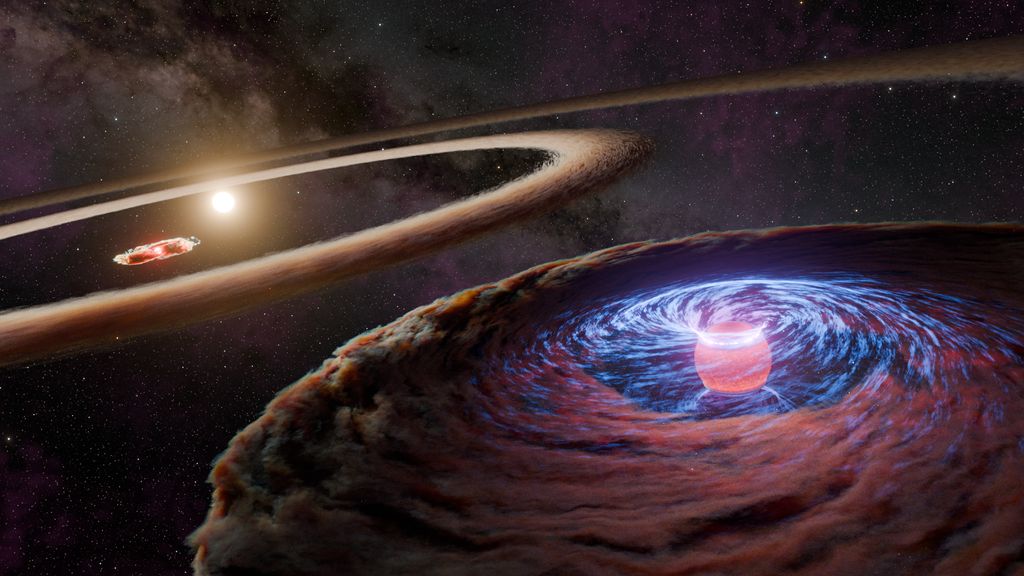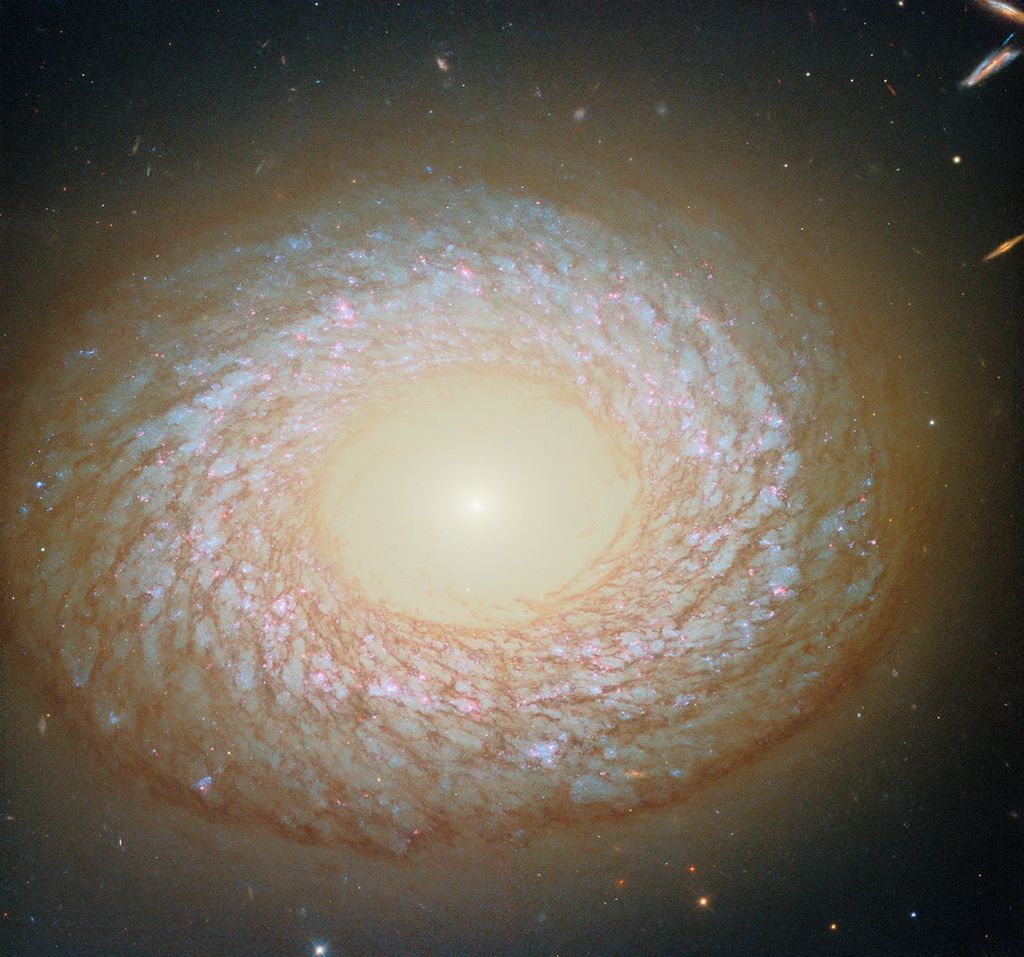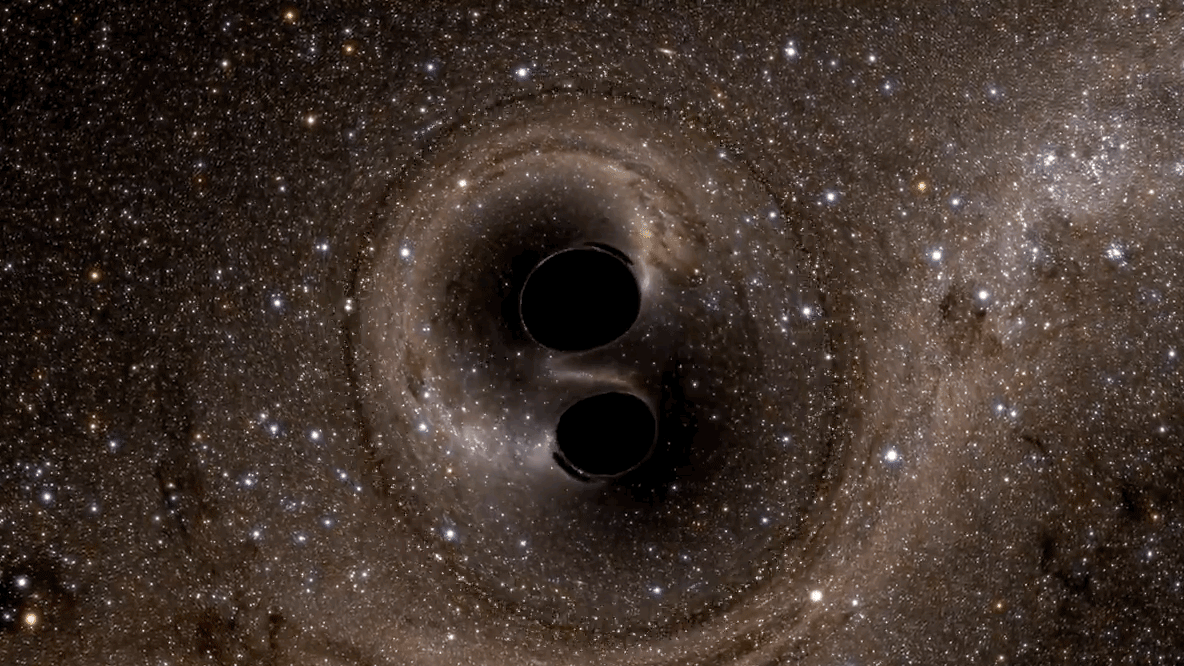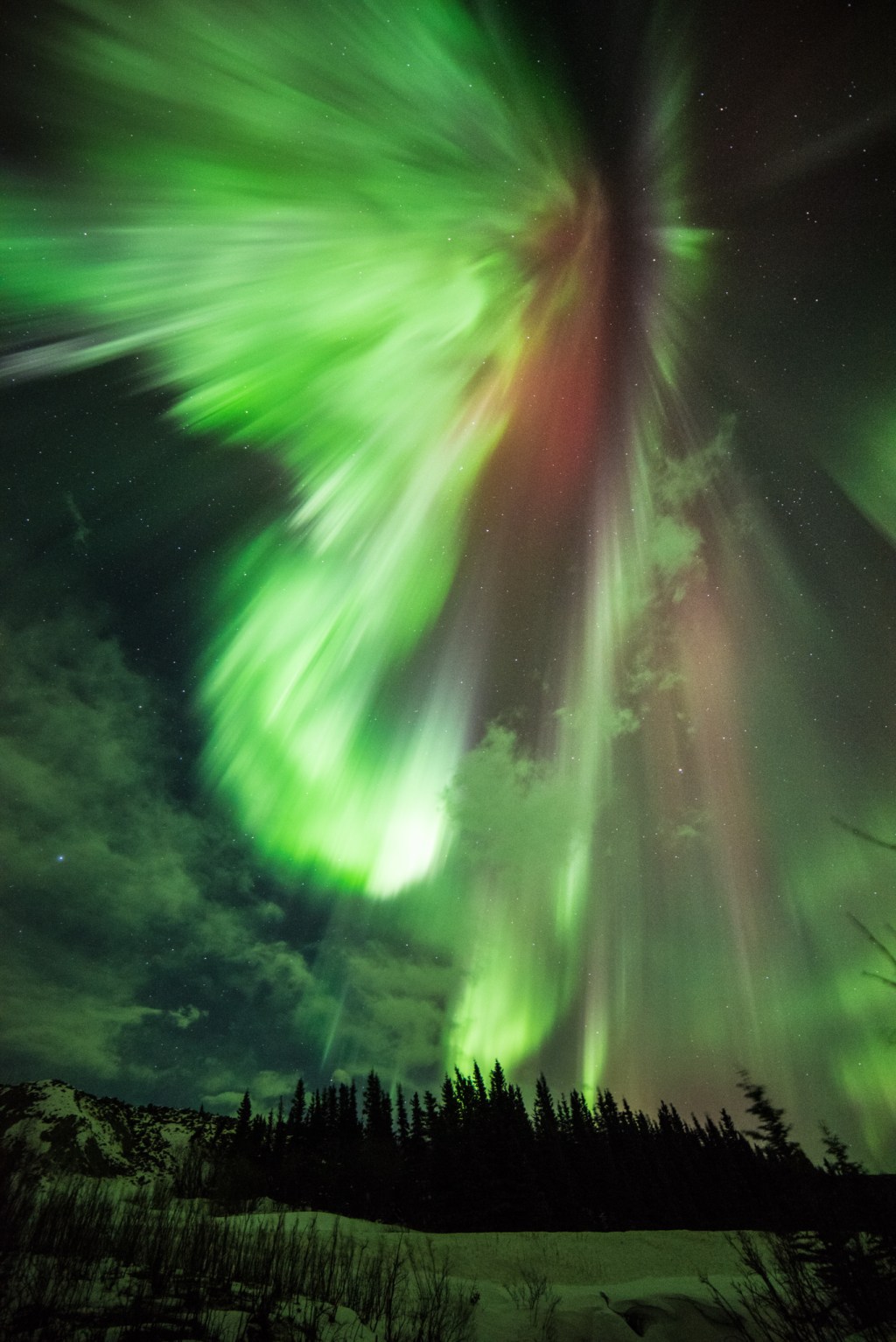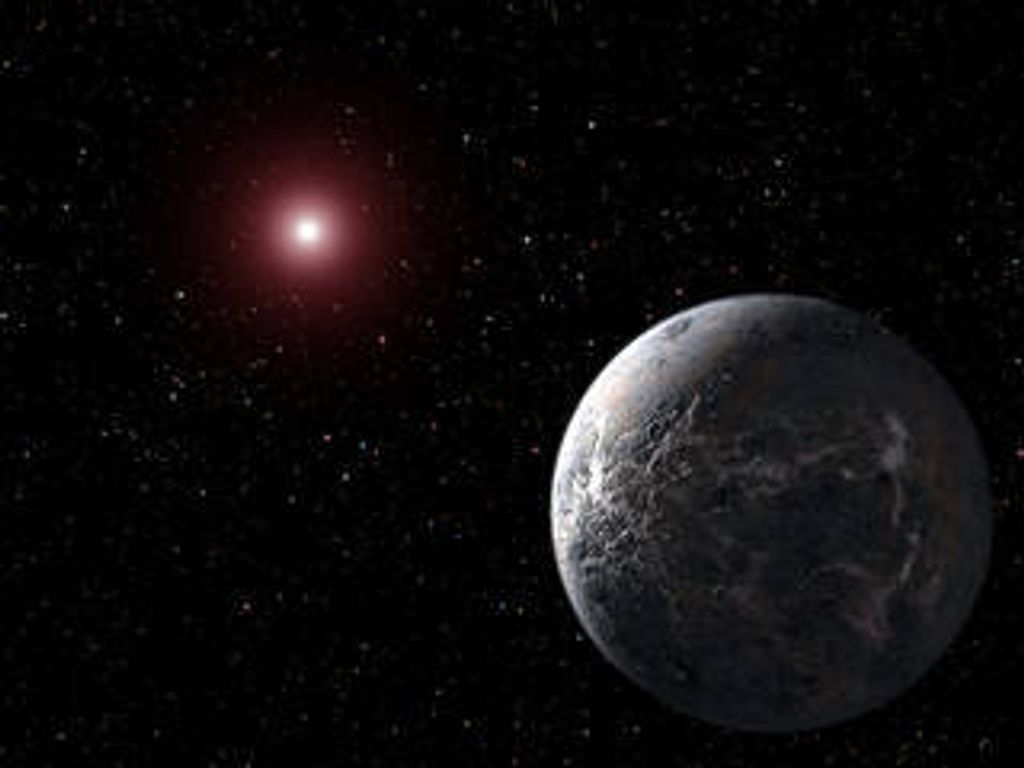1 min read
Bright Clouds on Uranus

A recent Hubble Space Telescope view reveals Uranus surrounded by its four major rings and by 10 of its 17 known satellites. This false-color image was generated by Erich Karkoschka using data taken on August 8, 1998, with Hubble's Near Infrared Camera and Multi-Object Spectrometer.
Hubble recently found about 20 clouds – nearly as many clouds on Uranus as the previous total in the history of modern observations. The orange-colored clouds near the prominent bright band circle the planet at more than 300 mph (500 km/h), according to team member Heidi Hammel (MIT). One of the clouds on the right-hand side is brighter than any other cloud ever seen on Uranus.
The colors in the image indicate altitude. Team member Mark Marley (New Mexico State University) reports that green and blue regions show where the atmosphere is clear and sunlight can penetrate deep into Uranus. In yellow and grey regions the sunlight reflects from a higher haze or cloud layer. Orange and red colors indicate very high clouds, such as cirrus clouds on Earth.
The Hubble image is one of the first images revealing the precession of the brightest ring with respect to a previous image PRC97-36a. Precession makes the fainter part of the ring (currently on the upper right-hand side) slide around Uranus once every nine months. The fading is caused by ring particles crowding and hiding each other on one side of their eight-hour orbit around Uranus.
The blue, green and red components of this false-color image correspond to exposures taken at near-infrared wavelengths of 0.9, 1.1, and 1.7 micrometers. Thus, regions on Uranus appearing blue, for example, reflect more sunlight at 0.9 micrometer than at the longer wavelengths. Apparent colors on Uranus are caused by absorption of methane gas in its atmosphere, an effect comparable to absorption in our atmosphere which can make distant clouds appear red.
About the Object
- DistanceDistanceThe physical distance from Earth to the astronomical object. Distances within our solar system are usually measured in Astronomical Units (AU). Distances between stars are usually measured in light-years. Interstellar distances can also be measured in parsecs.The semi-major axis of Uranus's orbit about the Sun is 19.18 astronomical units or roughly 1.8 billion miles (2.9 billion km).
- DimensionsDimensionsThe physical size of the object or the apparent angle it subtends on the sky.The planet has a diameter of roughly 32,000 miles (26,000 km) at the equator.
About the Data
- InstrumentInstrumentThe science instrument used to produce the data.HST>NICMOS
- Object NameObject NameA name or catalog number that astronomers use to identify an astronomical object.Uranus
- Object DescriptionObject DescriptionThe type of astronomical object.Planet
- Release DateOctober 14, 1998
- Science ReleaseHubble Finds Many Bright Clouds on Uranus
- CreditErich Karkoschka (University of Arizona) and NASA
Share
Details
Claire Andreoli
NASA’s Goddard Space Flight Center
Greenbelt, Maryland
claire.andreoli@nasa.gov

